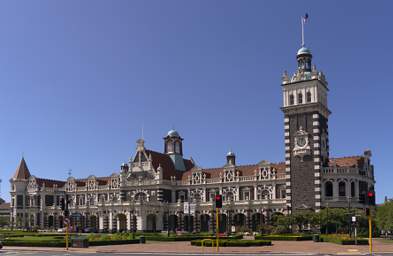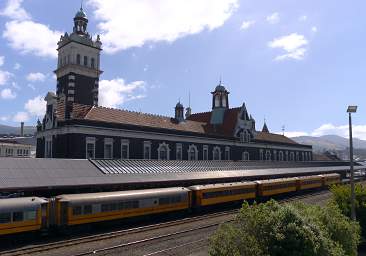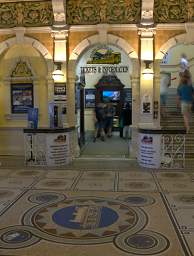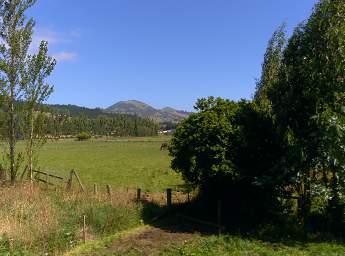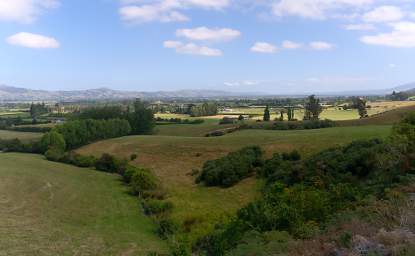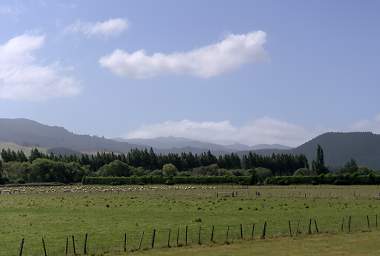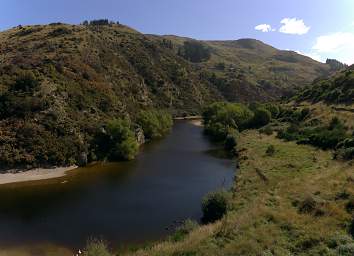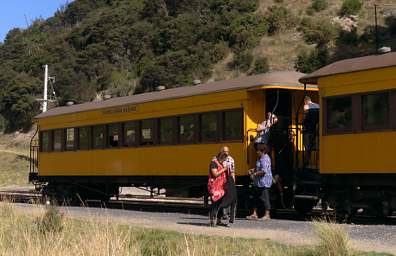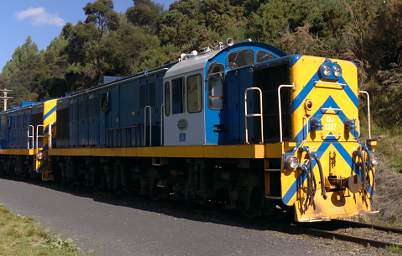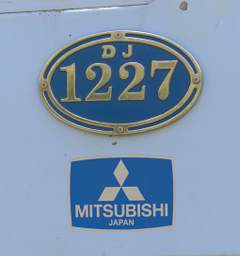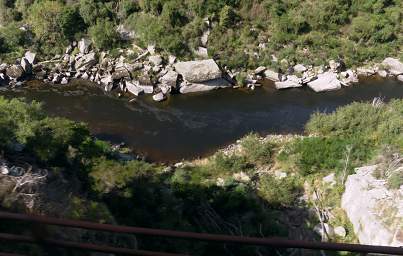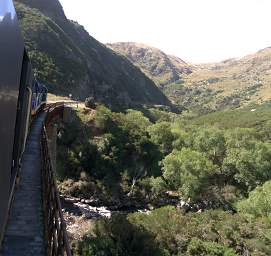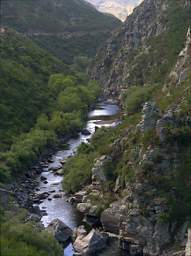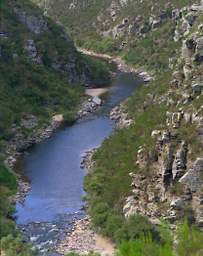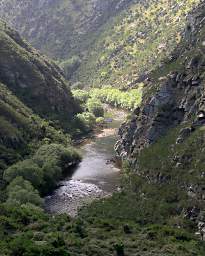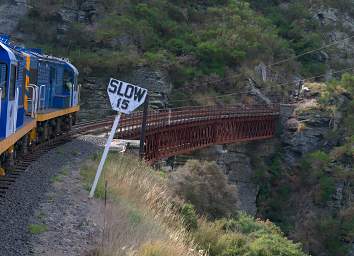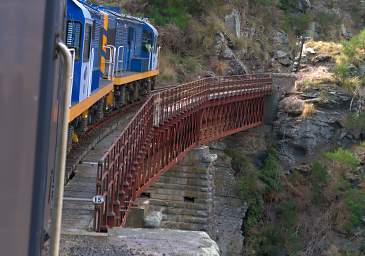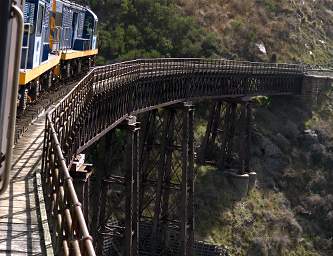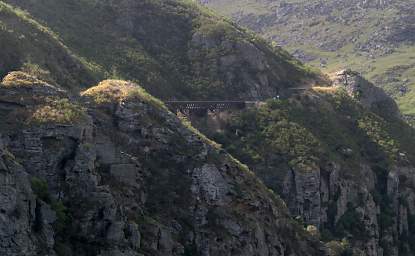The Taieri Gorge Railway
A Model Railroader's Dream Ride
February, 2016
Click on any image for a larger view;
Contact garya at this domain if you would like the high quality image for printing
One of the few things we had arranged before heading to New Zealand on this trip
was a five day bicycle ride on the
Otago Rail Trail.
We were starting the ride from the town of Middlemarch,
which is more or less in the middle of nowhere.
So first we had to get there from Invercargill,
where we ended up after our stay on Stewart Island.
From Invercargill we took a private / charter bus to Dunedin.
Along the way we stopped for a snack somewhere
where we had the worst chocolate shake of our lives —
and that in the land of Cadbury Chocolate.
Eventually our driver dropped us off at the Dunedin train station
where we had a little time before we could board the train.
We hopped on the
Taieri Gorge Railway
for a delightful day winding up the gorge of the Taieri River
to the village of Pukerangi.
For a person who loves trains and had a fairly complex model railroad as a kid,
it was a kick in the pants.
The rail cars have small observation platforms at the ends,
so you can lean out and get a wider view as you travel.
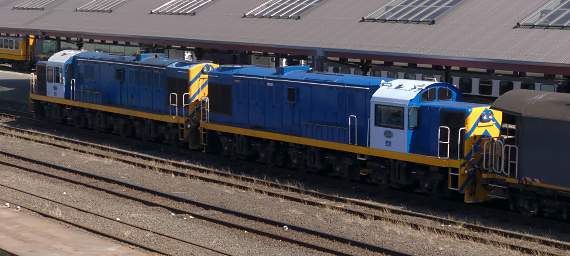 |
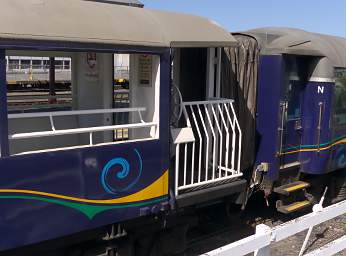 |
| Engines |
Observation Platform |
Our car turned out to be filled with Japanese tourists.
Most of them spent the journey in their seats,
engrossed in their electronic gadgets;
but a few ventured onto the platform for a better view and to take pictures.
We traded snacks with them;
we preferred ours,
and I suspect they preferred theirs!
 |
| Inside our Train Car |
As we wormed our way into the countryside,
we saw "typical" New Zealand farm country,
complete with the obligatory flocks of sheep.
While we were in the south part of the South Island,
none of the spectacular alpine scenery people associate with New Zealand was in evidence —
those dramatic mountains and fjords lay far to the west,
beyond our view.
Instead, we saw only low hills.
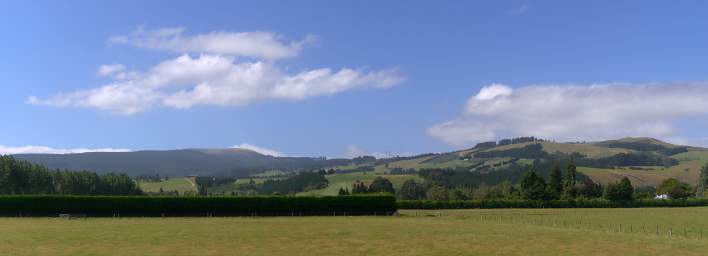 |
| Near Dunedin |
As we progressed up the Taieri Gorge,
the terrain got more rugged,
more canyon-like,
and drier.
In short order we were going through tunnels and over trestles and viaducts.
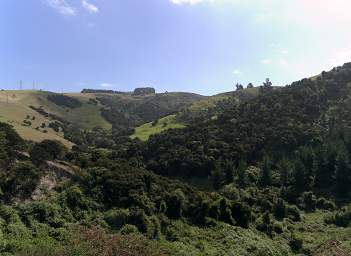 |
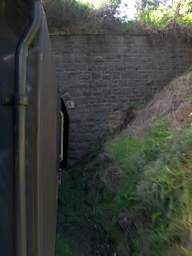 |
 |
 |
| |
Entering a Tunnel |
On a Trestle |
At one point the train crossed a trestle,
then did a long sweeping 180 degree turn
as it worked its way to higher ground.
It all reminded me of my model railroad when I was a kid,
and I thought it was great!
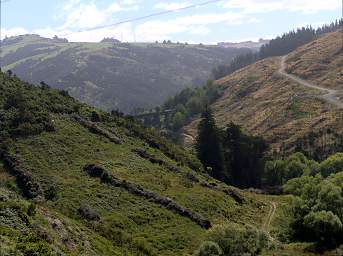 |
| U-Turn Trestle |
We passed through areas which had been clearcut,
then replanted.
It was a graphic demonstration about how vigorously New Zealand pursues a policy of raising trees commercially,
literally farming them like a crop.
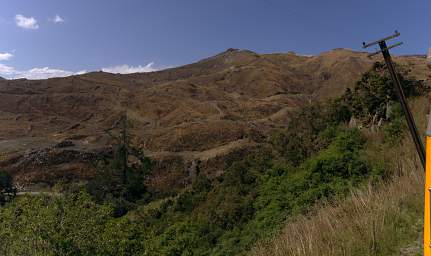 |
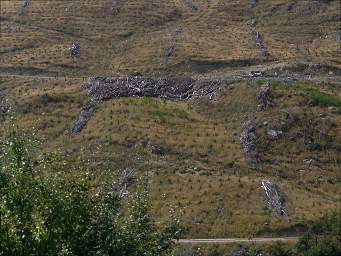 |
| Clearcut |
Clearcut Replant |
The Otago region is the driest part of the country, and
as the landscape became drier the commercial forests fell behind.
The Taieri River wound its way below the train;
it had little water at this point in the dry New Zealand fall in a dry region.
We crossed numerous bridges and trestles over small side streams.
The train traveled slowly, probably a good thing given the age of some of the structures
and the rail lines in general.
There were signs about top speed of 15 in places.
I assume that was in kilometers per hour,
since the standard on the roads is metric.
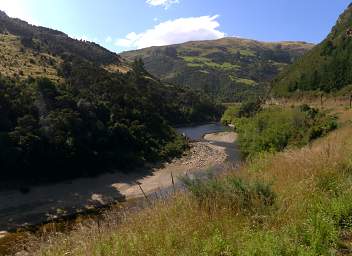 |
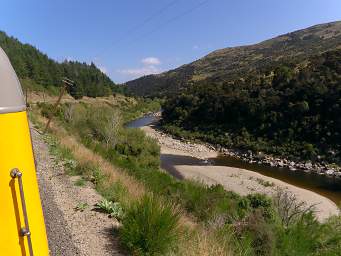 |
| Taieri Gorge |
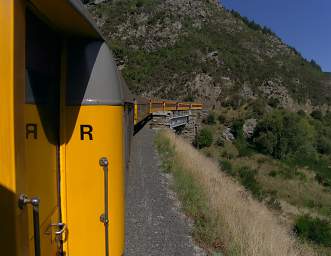 |
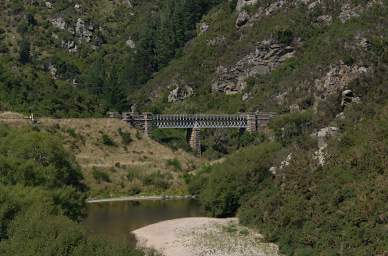 |
| On a Bridge |
We stopped for a "Get out and Stretch" rest at the "Hindo" Station,
now just an overlook with an old platform.
While there I noticed that the engines pulling the train were modern Japanese ones.
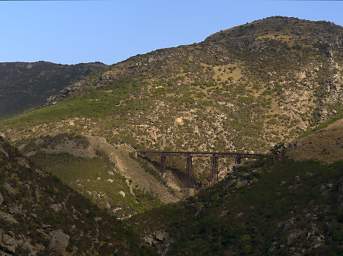 |
| Taieri Gorge Trestle |
We reached the end of the line at Pukerangi.
The end of the line is actually at Middlemarch,
but on some days it doesn't go that far;
or at least the connection that worked for us, the last one in the day,
doesn't go that far.
Since our bike ride started from Middlemarch,
we were met at the station by the folks from
Shebikeshebikes
who shuttled us to Middlemarch
where they outfitted us with bikes and dropped us off at
Jack's Stone Cottage where we spent the night.
The next day we started off on our five day ride on the
Otago Rail Trail.
